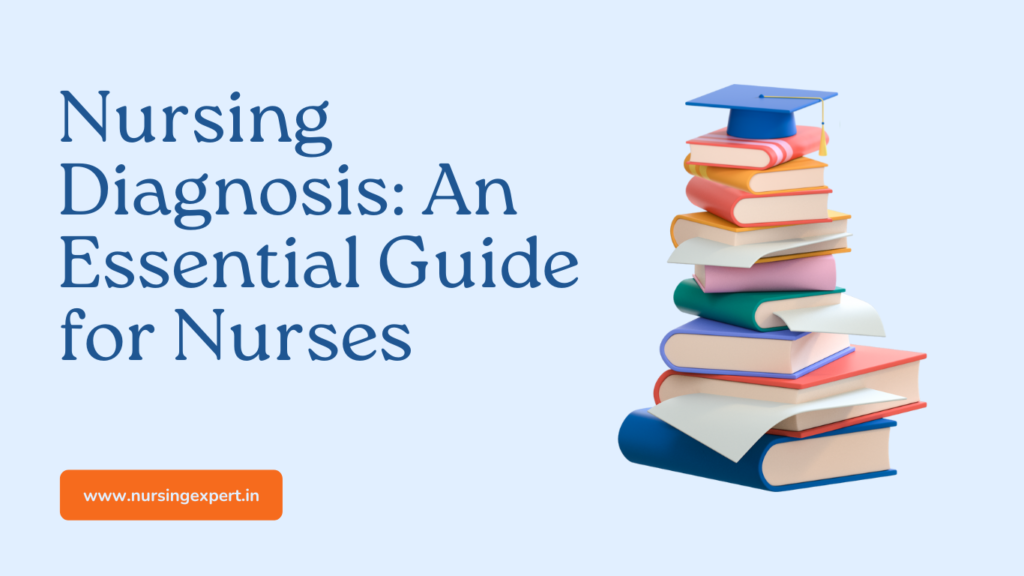Nursing Diagnosis: Understanding the Process
Nursing diagnosis is an important aspect of nursing care as it helps in identifying and addressing the health problems of a patient. It is a crucial step in the nursing process and allows the nurse to plan and provide individualized care to meet the specific needs of the patient. In this article, we will discuss the importance of nursing diagnosis and provide a comprehensive guide for nurses to master this essential skill.
Thank you for reading this post, don't forget to subscribe!
Understanding Nursing Diagnosis
Nursing diagnosis is defined as a clinical judgement about individual, family or community responses to actual or potential health problems and life processes. It is a process of identifying the patient’s needs, assessing their health status and developing a plan of care that addresses their specific needs. The nursing diagnosis is based on the patient’s signs and symptoms, medical history, and the nurse’s assessment of the patient’s health status.

Steps Involved in Nursing Diagnosis
The process of nursing diagnosis involves several steps which are as follows:
- Assessment: The first step in the nursing diagnosis process is to assess the patient’s health status. This involves collecting data about the patient’s signs, symptoms, medical history and current health status.
- Analysis of Data: The next step is to analyze the data collected during the assessment phase. This involves evaluating the patient’s symptoms and identifying any patterns or connections between them.
- Identification of Problems: Based on the analysis of data, the nurse identifies the patient’s health problems and potential health problems.
- Selection of Nursing Diagnoses: After identifying the problems, the nurse selects the appropriate nursing diagnoses for the patient. This involves choosing diagnoses that are relevant to the patient’s health status and that address the patient’s specific needs.
- Planning: Once the nursing diagnoses have been selected, the nurse develops a plan of care to address the patient’s specific needs. This involves setting specific, measurable and achievable goals for the patient and selecting the appropriate interventions to achieve these goals.
- Implementation: The next step is to implement the plan of care. This involves carrying out the selected interventions and monitoring the patient’s progress.
- Evaluation: The final step in the nursing diagnosis process is to evaluate the patient’s progress and determine if the goals set in the plan of care have been met. If the goals have not been met, the nurse revises the plan of care to ensure that the patient’s needs are met.
Benefits of Nursing Diagnosis
Nursing diagnosis provides several benefits to both the patient and the nurse. Some of the benefits are as follows:
- Improved Patient Outcomes: Nursing diagnosis helps to improve patient outcomes by identifying and addressing the patient’s health problems. This leads to a better quality of care and a more positive outcome for the patient.
- Better Communication: Nursing diagnosis provides a common language for nurses to communicate about the patient’s health status and needs. This improves communication between the nurse and the patient, as well as between the nurse and other healthcare providers.
- Increased Patient Involvement: Nursing diagnosis promotes patient involvement by allowing the patient to be an active participant in their care. This leads to a more positive patient experience and increased satisfaction with the care received.
- Improved Clinical Decision Making: Nursing diagnosis helps to improve clinical decision making by providing a systematic and structured approach to the nursing process. This leads to a more consistent and effective approach to patient care.
- Increased Professional Development: Nursing diagnosis helps to increase professional development by providing an opportunity for nurses to develop their assessment and problem-solving skills. This leads to improved confidence and competence in the nurse’s ability to provide quality care.
Types of Nursing Diagnosis
There are several types of nursing diagnoses, each addressing different aspects of the patient’s health status. Some of the most common types of nursing diagnoses include:
- Actual Nursing Diagnosis: This type of diagnosis addresses a health problem that the patient is currently experiencing.
- Risk Nursing Diagnosis: This type of diagnosis addresses a potential health problem that the patient may experience in the future.
- Health Promotion Diagnosis: This type of diagnosis addresses the patient’s need for health promotion and disease prevention.
- Syndrome Nursing Diagnosis: This type of diagnosis addresses a group of related symptoms that occur together and indicate a specific health problem.
- Wellness Nursing Diagnosis: This type of diagnosis addresses the patient’s overall state of well-being and their ability to meet their health and life goals.
Tips for Writing Effective Nursing Diagnoses
Writing effective nursing diagnoses is an important aspect of the nursing process. To write effective nursing diagnoses, nurses should keep the following tips in mind:
- Use a clear and concise language: The language used in the nursing diagnosis should be clear and concise to ensure that it is easily understood by the patient and other healthcare providers.
- Use a standardized format: The nursing diagnosis should be written in a standardized format to ensure that it is consistent and easily recognizable.
- Use a patient-centered approach: The nursing diagnosis should be patient-centered, focusing on the patient’s specific needs and addressing their health problems in a holistic manner.
- Use evidence-based practice: The nursing diagnosis should be based on the latest research and evidence-based practice to ensure that it is up-to-date and relevant.
- Regularly evaluate and update the diagnosis: The nursing diagnosis should be regularly evaluated and updated as the patient’s health status changes to ensure that it remains accurate and relevant.
Conclusion
Nursing diagnosis is an essential aspect of nursing care, providing a systematic and structured approach to the nursing process. By mastering this skill, nurses can improve patient outcomes, promote patient involvement and increase their professional development. To write effective nursing diagnoses, nurses should use a clear and concise language, a standardized format, a patient-centered approach, evidence-based practice and regularly evaluate and update the diagnosis. With these tips, nurses can provide quality care and make a positive impact on the health and well-being of their patients.



